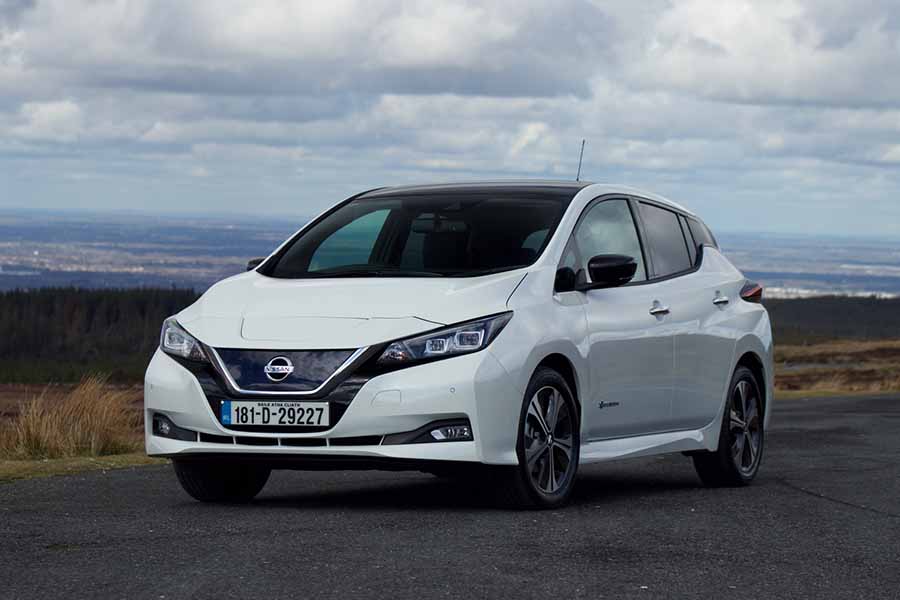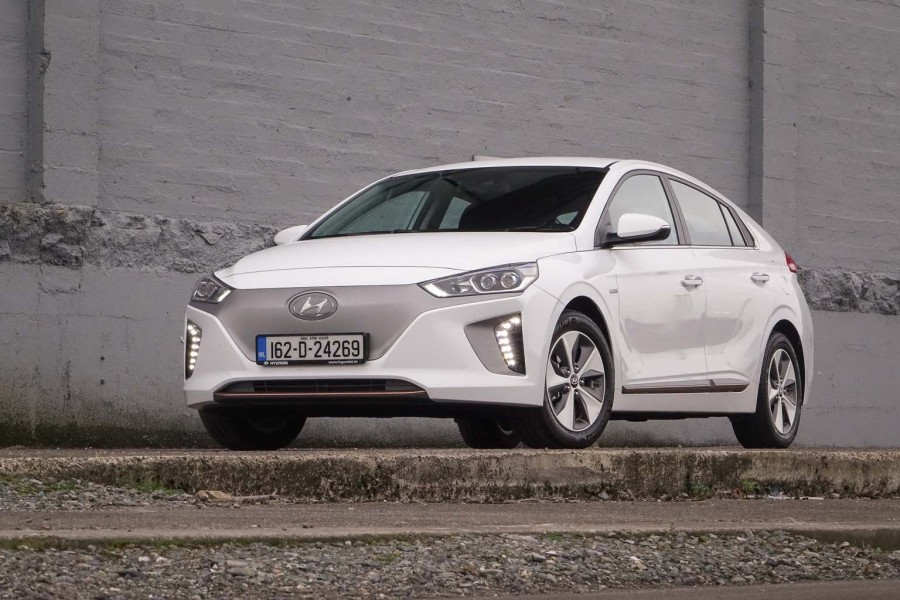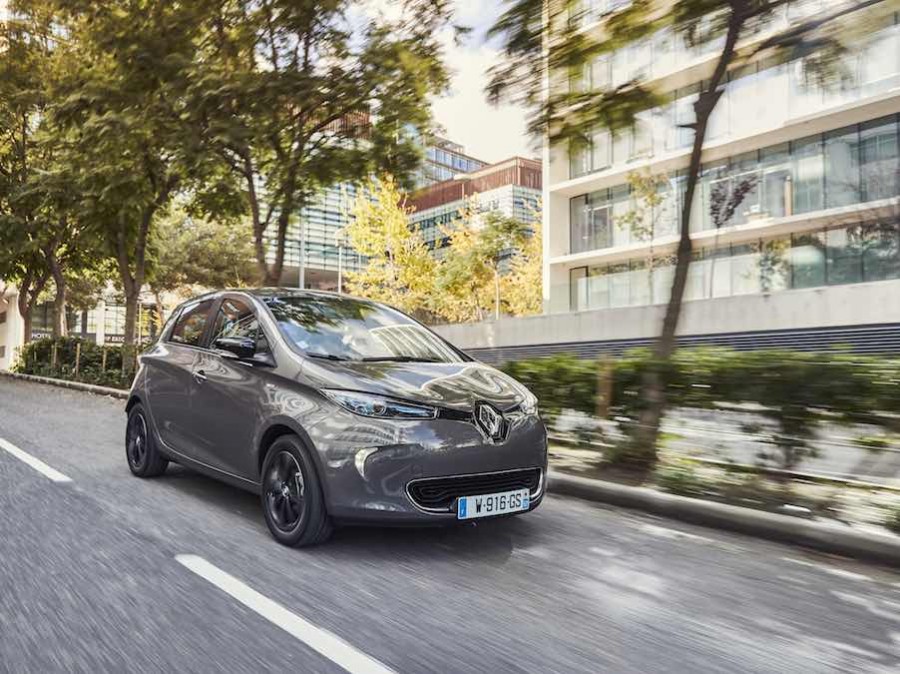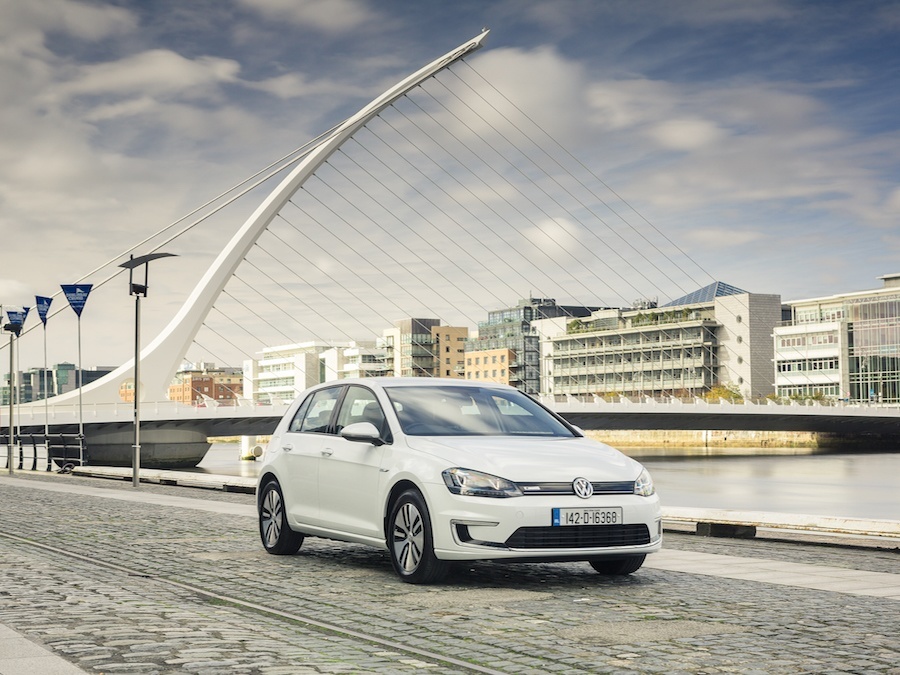Irish buyers' wait for the new second-generation Nissan Leaf is finally over, and the new car brings some significant improvements over its predecessor. As has always been the case with electric vehicles (EVs), range remains the salient point for buyers, and it is here that Nissan is improving things.
In the metal
While looks remain subjective, the slightly odd styling of the old Nissan Leaf wasn't always popular with the public. This time around the Leaf looks more like a regular hatchback; in fact, its styling isn't all that different to the Nissan Pulsar's. The Leaf's appearance improves as you move up the specification grades. From SV Premium the Leaf gains a contrasting black roof and door mirrors along with LED headlights and larger 17-inch alloy wheels. The panel cover for the charging port is also better integrated into the front-end design.
On the interior, its layout will have a familiar feel to anyone that has sat into one of the previous Leaf models. The seven-inch infotainment touchscreen looks more substantial than it is thanks to a large bezel surround. It isn't quite as impressive looking or user-friendly as the 9.2-inch system that is standard in the Volkswagen e-Golf, however. It is responsive, but using it on the move isn't always so easy due to some of the interface having small touch-sensitive buttons that can easily result in pressing the wrong one. The instrument display features a crisp seven-inch TFT display alongside an analogue speedometer. Users can set this display to show a variety of different things including power usage and range remaining. The boot is now up to 435 litres, an improvement over the previous model, and the rear seats fold in a 60/40 split to aid loading bulkier items.
Driving it
While driving range is going to be one of the most important things for those considering a new Nissan Leaf, we won't go into it in too much detail as this review is only our first taste of the car on Irish roads over a 24-hour period. A brief overview of Nissan's quoted charging times state that, with a DC fast charge, the Leaf can get to 80 per cent capacity in 40-60 minutes. Using a standard 7.2kW public charger or home wall box, it takes approximately 7.5 hours to fully charge the car. If you're stuck and need to rely on a standard household socket using a 'granny cable', expect a charging time of up to 21 hours.
What we can tell you is that we picked up the car fully charged and covered 193 kilometres over a mix of motorway, dual carriageway, primary and secondary roads, some of it in heavy traffic. For around half that time, the air conditioning was on, and we used a blend of Eco mode on and off and the new e-Pedal. At the end of this, the car was indicating that there were around 50 kilometres of range remaining. According to Nissan, the WLTP range of the vehicle is 270 kilometres, which is closer to what is considered real-world driving than the old test procedure.
A few things are immediately apparent when driving this new Leaf. The noise levels in the cabin have improved a good deal, mainly due to additional sound-proofing fitted in the rear sections of the car. Wind and road noise is lower and so too is the faint whine of the electric drivetrain. The experience is what most expect from an EV: silent and smooth running.
The ride quality is good with a suspension setup that is soft enough to soak up even particularly poor surfaces in more rural areas, yet the car retains enough composure to not detract from the handling. Not everyone that buys a Leaf is likely to try exploring the limits of its chassis performance, but if you are in a hurry, the Nissan feels sharp and holds the road well, even on its low rolling resistance tyres. The Leaf doesn't feel quite as refined in the suspension department as the Volkswagen e-Golf, nor can it match the sharpness of the BMW i3, but as an overall package we expect that it will draw little in the way of complaint from the majority of buyers.
Improved range aside, the other positive feature in driving the new Leaf is the introduction of the e-Pedal. Activated via a button on the centre console, this provides one-pedal driving, allowing you to accelerate and (mostly) brake by using just the throttle pedal. When you lift your foot off it, the system begins to regenerate energy, thus slowing the car right down to a stop if needed. It will also hold the car, even on a hill, until you reapply the throttle. It does take a little bit of time to get used to and to judge when you need to lift off, but we quickly got the hang of it.
Many experienced EV owners may already drive in such a way, especially when using higher rates of energy regeneration. Nevertheless, we found the e-Pedal to result in much smoother rates of regeneration. Around town and in heavier stop-start traffic the e-Pedal comes into its own.
We also tried out Nissan's new ProPilot system, which is an advanced form of adaptive cruise control. It can be activated above 30km/h and in a motorway scenario takes away some of the burden of driving in heavier traffic. It makes use of an array of sensors, radar and a camera system to monitor what is going on around it while keeping the car within the marked lanes. There are now several brands offering such systems, and the Nissan one works well. It tends to keep the car close to the centre of the lane, and you can feel the wheel continually making tiny adjustments as you hold it, which it's possible to do with just one hand. Specific scenarios, such as lane merges and slip roads, can momentarily throw it off, and it does audibly alert you, but it can quickly resume control as it detects the new lane markings. It's important to stress that this isn't an autonomous driving system as such, more an advanced cruise control, but one that does work well.
Although not available until May 2018, we did get a preview of the ProPilot Park system in action. For those that don't like parking, this system can take much of the stress out of the task. You can choose to park front or rear inwards or parallel park depending on the situation you're in. The camera and parking sensors quickly highlight what spaces are suitable and the driver can then select the one they want. Choosing the parking space starts the process, and it is then completed by holding down the button. Doing so acts like a deadman switch, stopping the process immediately if the button is released. The parking process does happen more fluidly and quickly than with some other parking assistance systems, but it is an expensive option and only has value for those that aren't confident when it comes to parking.
What you get for your money
Among its immediate rivals, the e-Golf and Hyundai Ioniq, the Leaf has the lowest starting price, at €28,690. However, we think that most potential buyers will want the Leaf SV version as a minimum given the additional features it comes with, such as the heat pumps, seven-inch infotainment screen (only an option on XE grade) and alloy wheels. Nonetheless, this does bump up the price by a further €2,400. The SV Premium comes in at just under €30,000 and adds two-tone paint, ProPilot, parking sensors front and rear and heated front seats and steering wheel.
Summary
So the new Nissan Leaf raises the standard for mainstream electric vehicles up another notch. While some existing Leaf owners might rue the lack of a more significant jump in battery capacity, for now, the 40kWh car generates enough range that will be welcomed by older 24kWh owners or those making their first jump into an EV.


































